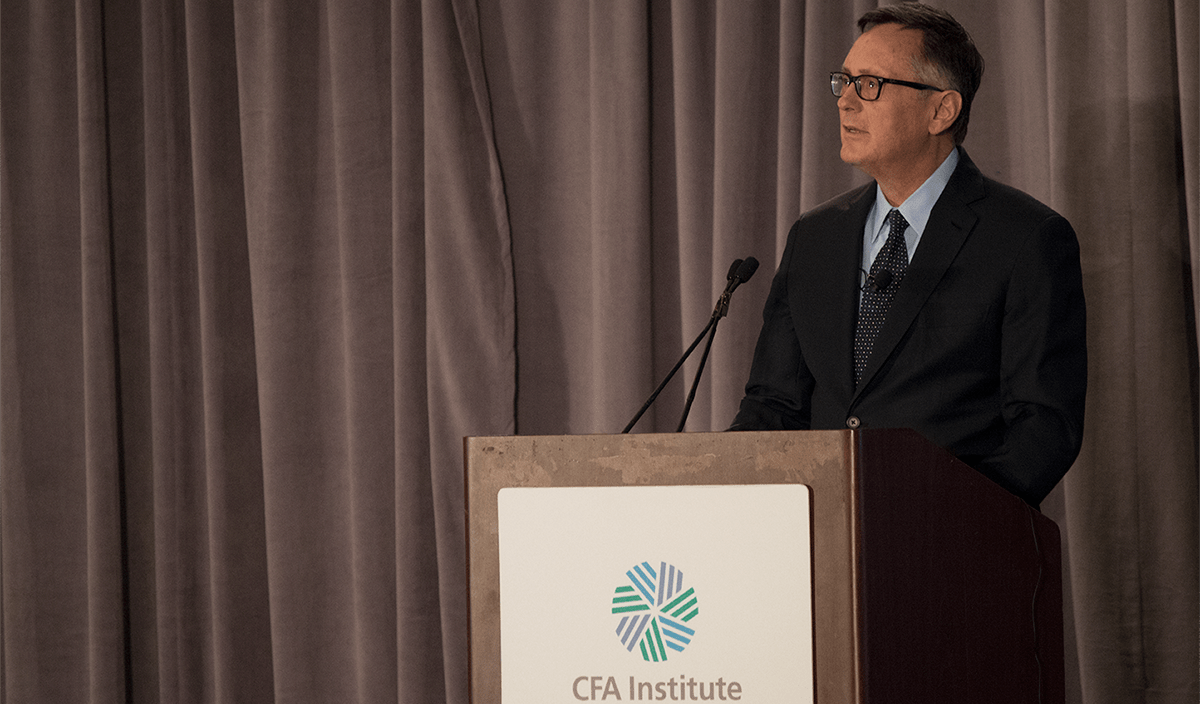[ad_1]
Richard H. Clarida spent a dozen years working in bond markets and 30 years as a professor watching the US Federal Reserve. Now that he is vice chair of the Fed, he has a new perspective.
“When you’re inside the building,” he explained at the CFA Institute Fixed-Income Management 2019 Conference in Boston, “the interactions between monetary policy and financial markets — the plumbing of the financial system — is much more important and much more complex.”
In recent years, the Fed has done more to explain some of that complexity to the public. “I think that it is an evolution in Fed communication,” Clarida said, and after reading his prepared remarks, he discussed what has gone into that evolution.
A combination of technological and financial forces have driven the central bank’s changing communication strategy. The digital revolution and the interconnected nature of global financial markets mean that market participants can receive and react to monetary policy decisions much more quickly. The consequences of those decisions can be far-reaching.
“You just can’t ignore the global impact that we have on our own rate constellation,” Clarida said.
And that makes communication a vital component of the Fed’s toolkit. Why? Because policy changes need time to take effect. “Any decision, say that we make at a September meeting or a July meeting, we know going in that decision’s going to have no effect on July inflation or July GDP,” he said. “It will only affect the economy with a lag.”
So over the last 25 years, the Fed has more widely disseminated its decisions and the economic variables that influence them. The Federal Open Market Committee (FOMC) has taken steps to publicize its decisions and the Fed’s Summary of Economic Projections publishes forecasts that use an expanded set of economic variables to project economic performance over longer time horizons. Former Fed chair Ben Bernanke held the central bank’s first press conference in 2011.
“Most central banks around the world have that format now,” Clarida said, pointing to the European Central Bank (ECB), the Bank of Japan (BOJ), and the Bank of England (BOE). “We’re not going back to the old days.”
These communications have grown ever more important as the global economy has become more sensitive to and dependent on monetary policy decisions. “You’ve always had an integrated global bond market,” he said. “But we’re in an unusual circumstance where tens of trillions of dollars of sovereign debt trade with negative yields.”
Should we be worried about negative yields? Clarida doesn’t see cause for alarm, though he acknowledges that such circumstances are unusual. “I think the global economy is sort of muddling through,” he said. “It’s not a dire situation, but it’s certainly not a dynamic, robust situation.”
Of course, if that situation changes, it will be important for the Fed to share updates in the coming months.
If you liked this post, don’t forget to subscribe to the Enterprising Investor.
All posts are the opinion of the author. As such, they should not be construed as investment advice, nor do the opinions expressed necessarily reflect the views of CFA Institute or the author’s employer.
Image courtesy of Paul McCaffrey
[ad_2]
Image and article originally from blogs.cfainstitute.org. Read the original article here.

